84 Most Beautiful Places in Japan
Japan is a unique country because it has a lot of different cultures, traditions, and most beautiful places in japan. You can get lost in the unique architecture, temples, and gardens, and there are also unique places that are out of the ordinary.
Japan has a lot of places that visitors find inspiring and interesting. Here are some of the most beautiful and less well-known places in Japan that you have to see to believe. There are old castles, amazing flower shows, and strange landscapes that look like they were taken from a different country.
Table of Contents
Here are Most Beautiful Places in Japan to visit:
If you want to go to Japan but don’t want to do the usual things. We have put together a list of most beautiful places in Japan that not everyone knows about but are worth seeing at least once.
1. Risshakuji Temple (Yamadera)

Yamadera is a Buddhist temple in Yamagata prefecture. It is also called Risshaku-ji Temple. It was set up in the year 860 by Ennin, a priest who had a formal order from Emperor Seiwa. On the steep 1,000 steps that lead to the top of the mountain, you can look at historical buildings. Kaizendo is one of the main halls, and it and the red building next to it, called Nokyo-do, both have great views.
Matsuo Basho, one of Japan’s best-known poets, has also written about how beautiful the temple is. As you walk through the mountain, you can see some of them carved into rocks.
2. Cat Island (Aoshima)
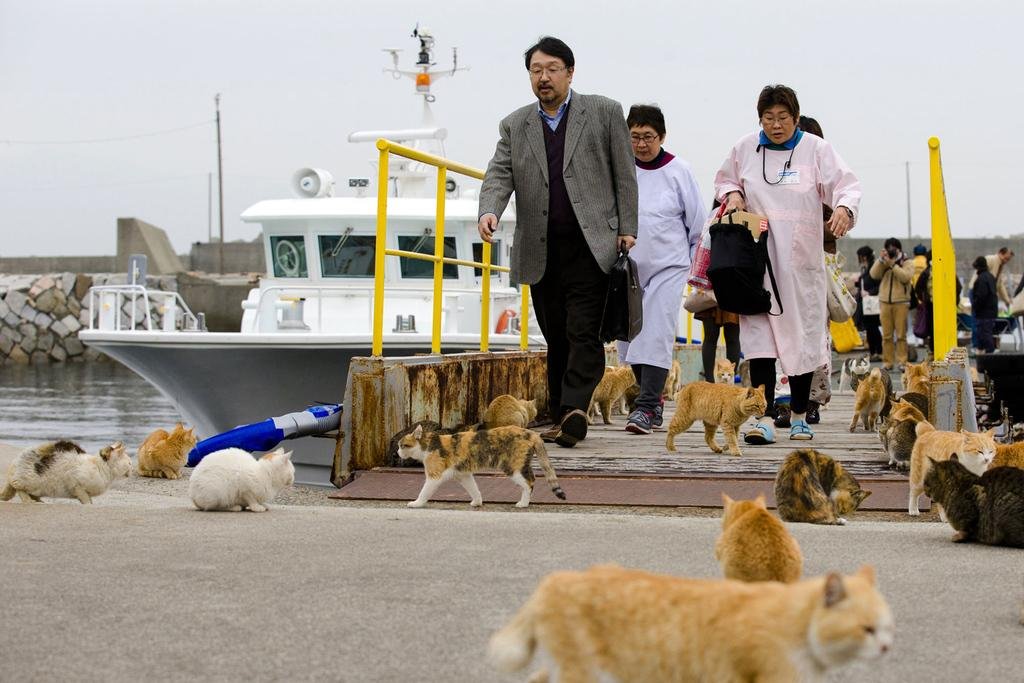
There are a few islands in Japan where there are more cats than people. This is a phenomenon that only happens in Japan. The island with the most people who know about it is Aoshima. Even though there are only about a dozen people on the island, there are more cats than people. The number of tourists has grown a lot in the last few years.
These furry locals have noticed that more people are giving them treats, so they tend to gather by the dock to greet newcomers.
3. Mount Koya : Most Beautiful Place in Japan

Shingon Buddhism is the spiritual home of Mount Koya. It is a sect of Buddhism that was started by Kobo Daishi, one of Japan’s most important religious figures, more than 1,200 years ago. Kongobu-Ji, the main temple of the sect, is on the top of Mount Koya, where there is a forest. Around Mount Koya, more than 100 other temples have been built, and many of them let people stay the night.
4. Nagoro Island: Nagoro Doll Village
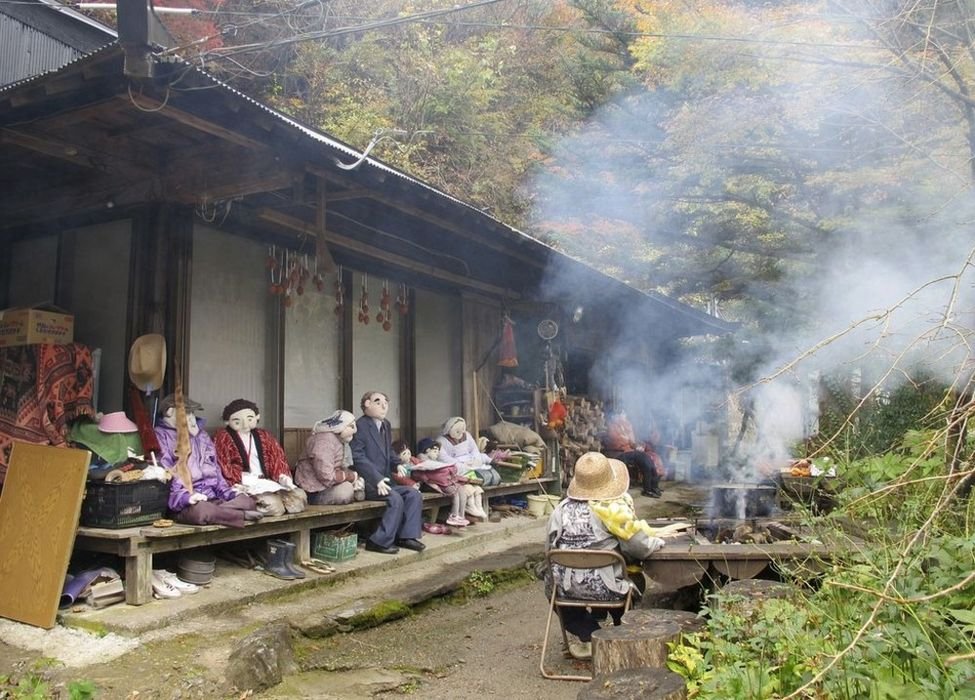
The history of this island is both “creepy” and “interesting.” The number of people living in Nagaro has been going down over time. The people in the village left to find work elsewhere. After a few years, Tsukimi Ayano went back to the village and made dolls to remember each person there.
Today, the Nagaro island is known as the doll island because it has more than 300 life-size dolls that look just like people.
As people walked around the island of Nagaro, they could see monuments that stood out and beautiful lakes.
Because of this new personality trait, the village has recently seen a small increase in tourists.
5. Niigata prefecture’s Kiyotsu Gorge

The Kiyotsu Gorge in Niigata prefecture is a huge natural wonder with volcanic columns called “columnar jointing” that look out over a dramatic river. After the walking trails were deemed unsafe and closed to the public in 1988, Ma Yansong and the MAD Architects team built the Tunnel of Light, a 750-meter-long tunnel that leads out to the gorge so that visitors can safely see its breathtaking beauty.
6. Sagano Bamboo Forest

If you want to see a landscape that will catch your eye, the Sagano Bamboo Forest is the place to go. This forest is in Arashiyama, Kyoto, and is a part of Japan’s culture that is unique. Most of the “Moso bamboos” in Sagano Bamboo Forest are native to Japan. The fact that the Japanese Ministry of the Environment thinks of the forest as a soundscape of Japan is an interesting thing about it.
The forest is a peaceful place in nature. It has a beautiful view and the sound of bamboos rattling is soothing. This voice is so calm and peaceful that it makes people feel calm and peaceful inside.
The Sagano Bamboo Forest is a stark contrast to the way people live in Japan, which is very urbanised.
7. The Seven Hells of Beppu (Jigoku)
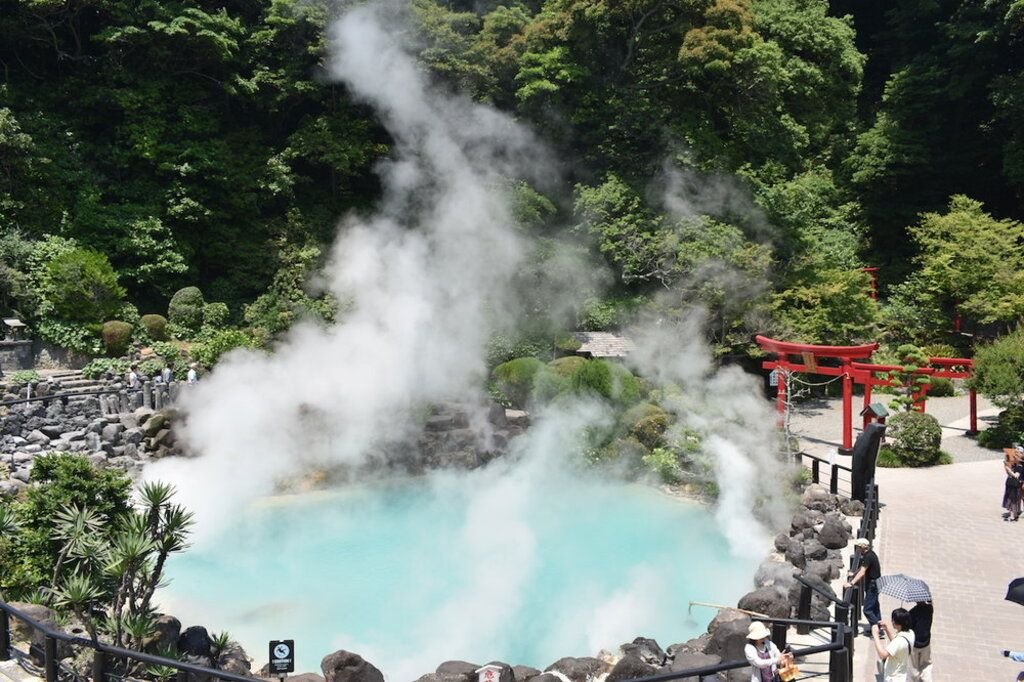
Even though Japan’s hot springs are known for being good for your health, you shouldn’t swim in most of the jigoku in Beppu, which are literally steamy tourist attractions. Kannawa and Shibaseki are the two parts of Beppu that have these hot pools. Kannawa has five springs and Shibaseki has two.
Make sure to see the real crocodiles in Oniyama Jigoku (monster mountain hell) and take a picture of Chinoike Jigoku (blood pond hell) while you’re there. Oh, and to round out the experience, you can try pudding and onsen tamago, which are both cooked with steam from the “hells” (egg cooked using hot spring water).
Prices are 400 (S$5) per hell or 2000 (S$25) for all seven.
Beppu Jigoku is at 559-1 Tetsuyuki Beppu, Oita Prefecture 874-0045, Japan. It is open from 8 a.m. to 5 p.m. every day. You can call them at +81-977-66-1577.
8. Oirase Gorge, Aomori

This beautiful gorge in the mountains of Aomori is one of the best places to visit in Japan in the fall. The 9km trail from Ishigeo to Nenokuchi at the mouth of Lake Towada is beautiful, not because it’s a hard hike but because of the beautiful scenery all along the way.
The rushing Oirase Stream runs through a forest of bright red and orange trees and boulders covered in moss. Several waterfalls feed into the stream. It’s the best time of autumn in Japan.
10. Rice Terrace at Hoshitoge

The Hoshitoge Rice Terrace is a scenic spot in Niigata prefecture that has a lot of meaning. 150 hectares are covered by about 200 rice paddies, making a beautiful natural landscape. With the beautiful scenery around it, it changes colour and looks different every season.
The best time to go is between June and September, when you have a good chance of seeing a sea of clouds along with the beautiful water-filled rice paddies. The water takes in and reflects the colours that change with the time of day and the season, making for a stunning view.
11. Noto Peninsula

The Noto Peninsula is in the northern part of Ishikawa Prefecture. It is home to some of Japan’s most beautiful and unusual coastal and rural landscapes. In addition to being a beautiful place to look at nature, the peninsula has many places to fish, swim, and camp.
The town of Wajima is one of the strangest places in Japan. Less than 30,000 people live there, and it’s a great place to see how people live in a small Japanese city.
12. Kinkakuji Temple, Kyoto
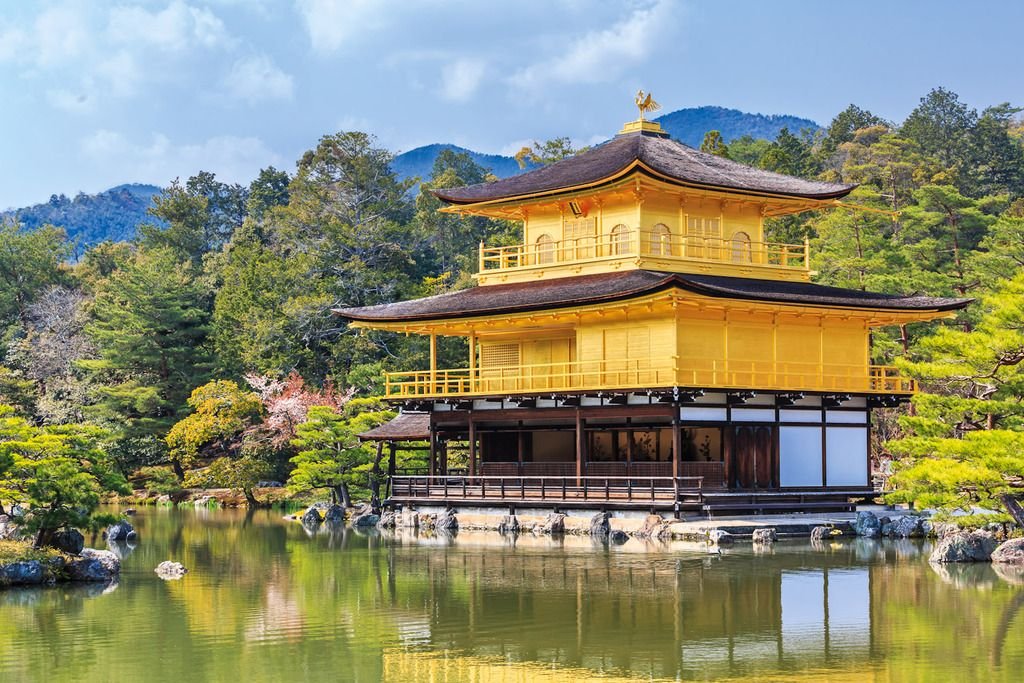
Kinkakuji, also called the Golden Temple, is a Zen Buddhist temple that is covered in gold. It is a beautiful and shiny place in the middle of old Kyoto. In fact, the temple is so beautiful that a young monk tried to burn it down in 1950, which was the inspiration for Yukio Mishima’s famous novel “The Temple of the Golden Pavilion.”
Before you can see the temple up close, you have to walk along a path to see it and its reflection. Be ready to take a lot of pictures! Go there early in the morning or late in the afternoon to avoid crowds and have the gold leaf shine less.
13. Nakagin Capsule Tower: Piece of Future Architecture in Japan
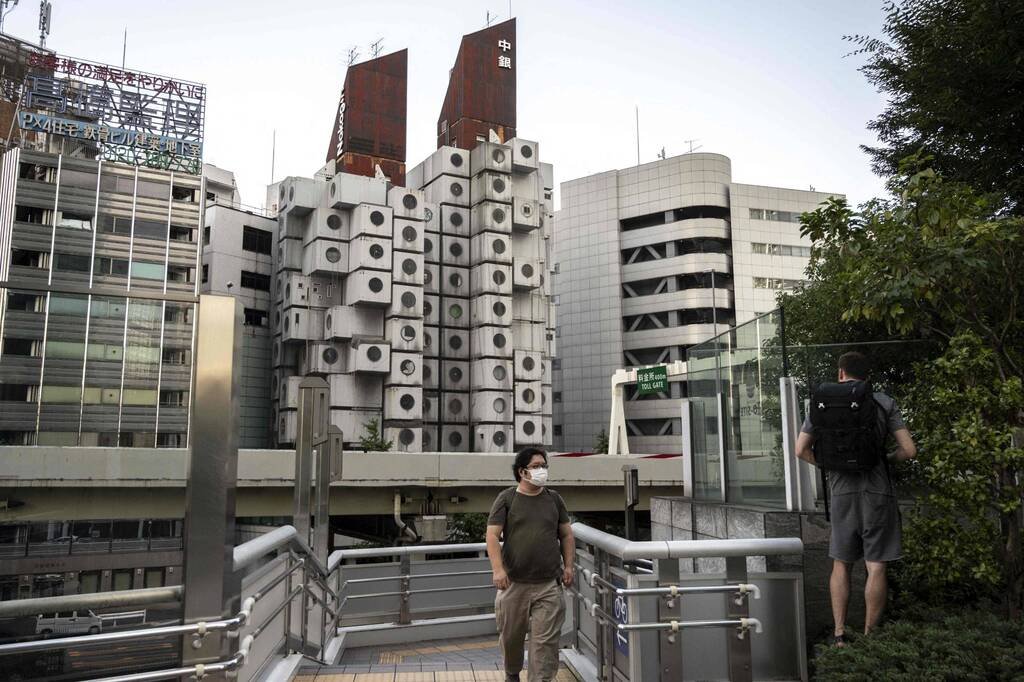
During the short Metabolism period in Japan in the early 1970s, this strange, multi-use tower was planned and built. This is one of the few buildings from this time that was designed and built in this style and still stands today. The tower took only 30 days to build, and on its 13 floors, there are offices and about 30 full apartments.
You can still rent an apartment in this strange-looking tower from a 1940s science fiction writer’s vision of the year 2000, if you’re interested.
14. The garden in Nishinomaru

The Nishinomaru garden is a place in Japan where you can find the most beautiful flowers that you can’t find anywhere else in the world. The famous cherry blossom is one of the native flowers of Japan that can be found in the garden. Nishinomaru Garden is in Osaka and is a very interesting place. It is not too far from the main city.
The Osaka castle, which is close to the garden, is the most beautiful thing about it.
Both the Nishinomaru garden and the Osaka castle are important parts of Japan’s history and culture and are on the list of “heritage sites.”
15. Mt Fuji, Yamanashi
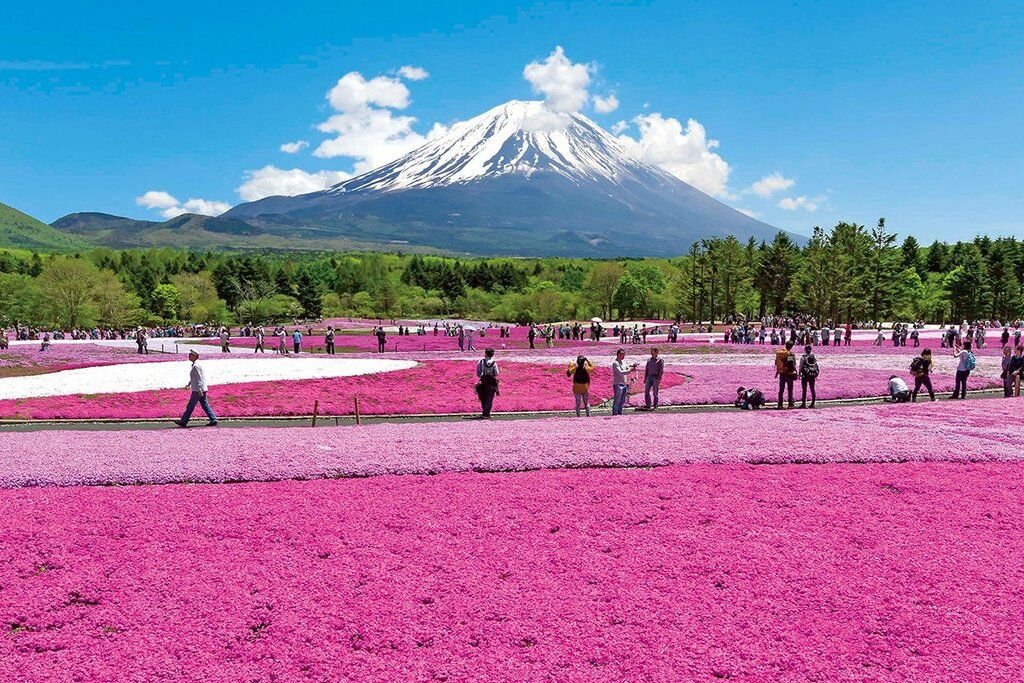
Mt. Fuji is a must-see for anyone who comes to Japan. It is the country’s crown jewel and might be the most beautiful place there. There are many places to see the big mountain, but the best views are from Arakurayama Sengen Park, where you can see the beautiful Chureito Pagoda, and Lake Kawaguchi.
One of the Fuji Five Lakes, Lake Kawaguchi, has beautiful views of Mt. Fuji, especially in winter when the sky is mostly clear and the volcano’s reflection can be seen in the water. Still, the near-perfect symmetry of Mt. Fuji is a beautiful sight all year long, no matter where you look at it.
16. Fukui Prefectural Dinosaur Museum
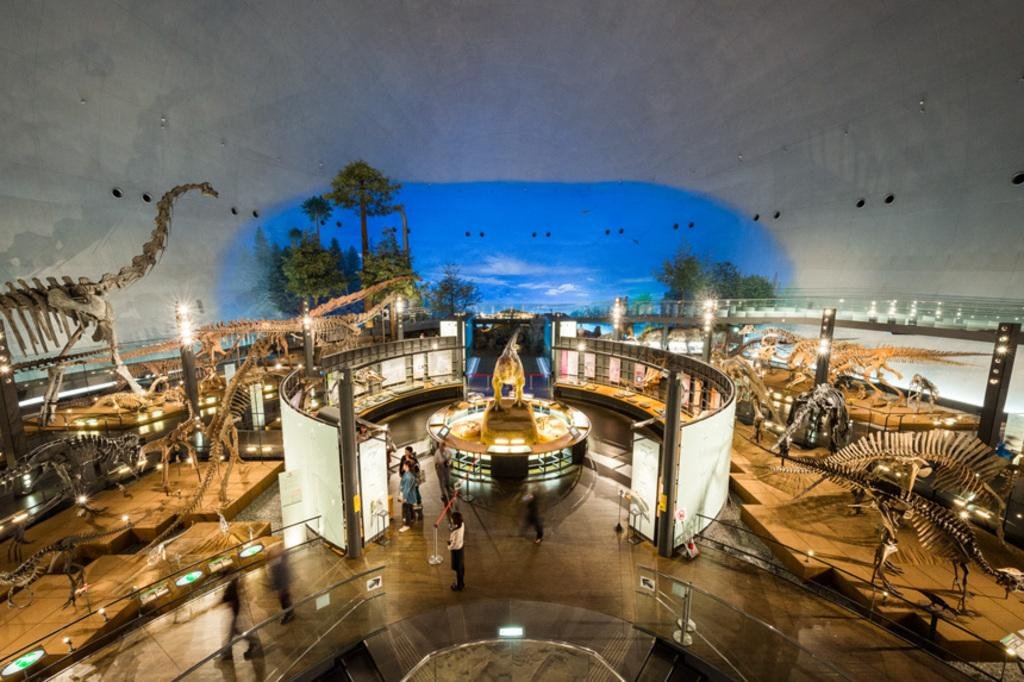
At this museum, you can see fossils of dinosaurs from the Jurassic and Cretaceous periods and learn about the Earth’s geological layers, which help scientists figure out when these huge reptiles lived. When you eat lunch at the dino-themed cafe, you can also try some cute dishes that look like the creatures you’ve come to see.
You won’t want to miss a two-hour tour of the nearby Dinosaur Quarry, where fossils of mollusk shells, plants, and dinosaur footprints have been found. It’s a twenty-minute bus ride away, so sign up early to make sure you get a seat and have a fun tour with your guide.
Prices: 720 (about S$9) to get in, and an extra 1200 (about S$15) for a tour.
Fukui Prefectural Dinosaur Museum: 51-11 Terao, Muroko, Katsuyama, Fukui 911-8601, Japan | Hours: 9am–5pm, last entry at 4:30pm (Daily, may be closed on certain days) | Tel: +81-779-88-0008 |
17. Ogasawara Islands

The Ogasawara Islands are a group of uninhabited islands about 1,000 km south of the centre of Tokyo. Because it is in a remote place, it has a unique variety of ecosystems of plants and animals. Some marine life and other animals can only be seen here in Japan.
The only islands with people who can be reached by ferry are Chichijima and Hahajima. The emerald-green water and white sand beaches are a great way to relax away from the busyness of cities. It was named a UNESCO World Heritage Site for real in 2011.
18. Island Of Shikoku

Shikoku is the fourth largest island and one of the most unusual places in Japan. It is southwest of Honshu, the main island, and is connected to it by two bridge systems. The island is also connected to the influential monk Kobo Daishi because it is the site of one of the country’s most important pilgrimages, the 88 itinerary of the temple. People who want to grow spiritually are drawn to the island, but it also has beautiful beaches, mountain ranges, and rivers that flow quickly.
19. Mt Haguro, Yamagata

Mt. Haguro is the most easily reached of the three mountains that make up the holy Dewa Sanzan pilgrimage route. It looks like a real-life enchanted forest. The nearly 2,500-step climb to the shrine at the top of the mountain will definitely test your stamina and determination.
But right at the foothills, seemingly out of nowhere, is an elegant five-story wooden pagoda. It was built in 937 and is surrounded by a thick cedar forest with trees that are at least 300 to 600 years old.
It’s a magical, almost unreal view that will stay with you long after you’ve finished the hour-plus hike. The tall cedar trees that line the path to the top make you feel small and humble.
20. Kitsune Mira – Fox Village

In the Miyagi prefecture, there is a small village with lots of foxes that you can visit for about $1. Most of these cute animals have been saved, and the Zao Village is a safe place for them. Visiting the village, you’ll be able to see these foxes play (and sometimes fight, especially if you feed them) (and sometimes fight, especially if you feed them). This is one of the cutest places in the world, and my favourite of all the “random adorable animal sanctuaries” in Japan.
21. Nachi Katsuura

The UNESCO World Heritage Site “Sacred Sites and Pilgrimage Routes in the Kii Mountain Range” includes a number of beautiful spots in Nachi Katsuura, which is in the prefecture of Wakayama. The three grand shrines of Kumano and the hiking trails that were once part of the ancient Kumano Kodo pilgrimage route through the sacred forests make up Nachi Katsuura.
Nachi Katsuura was important because it was the centre of a unique mix of Shinto and Buddhism. Famous and powerful people have been there throughout history. It is also a popular place for foreign tourists to visit because it is a great place to go trekking and learn about history at the same time.
22. Aokigahara Suicide Forest

If you’ve seen “The Dark Tourist” on Netflix, you’ve probably heard about this place in Japan. This place is a great place for tourists to visit because it has a lot of social problems and meaning. The Aokigahara forest is a popular forest on Mount Fuji. It is also known as the “sea of trees.”
In Japan, the forest is known as a place where people go to kill themselves, and it’s easy to find things that people left behind as you walk through it. People say that the forest has a creepy feel to it and that strange things happen there.
If you’re looking for a dark, exciting adventure, well! You might really like this place.
23. Motonosumi Shrine, Yamaguchi

In Japan, it’s common to see torii gates lined up in a tunnel. Fushimi Inari is in Kyoto and Nezu Shrine is in Tokyo, but the most beautiful place is Motonosumi Shrine in the seaside town of Nagato. It is a relatively new shrine, having been built in 1955. It has 123 torii gates that lead down steep cliffs and offer amazing views of the ocean.
At most shrines, you just throw a coin into an offering box. Here, you have to shoot your donation into a box at the top of the six-meter-tall final torii gate. If you make it, you might just get what you want.
24. Museum Of The Sewerage

This Tokyo museum, which is also called the Kodaira Sewerage Center, is mostly underground. Only two of its five stories are above ground, which fits well with the museum’s theme. Here, you can see what happens to trash after it goes down the toilet and visit a sewer tunnel that is 25 metres below the ground.
There is a small library there, and you can look at the bacteria that help clean the water through microscopes to learn more about them. Each floor deals with a different part of sewage, from flushing to cleaning up. I guess you could say that they have their act together in terms of organisation.
Entry Price: free of charge
Address: The Museum of the Sewerage is at 1-25-31 Josuihoncho, Kodaira-shi, Tokyo, Japan.
It is open from 10 a.m. to 4 p.m. (except on Mondays), and you can call them at +81-42-326-7411.
25. Kiso Valley

One of the most beautiful places in Japan is the Kiso Valley, which is where the Nakasendo Trail is. The Nakasendo Trail was one of only five roads that connected Edo (Tokyo) and Kyoto during the Edo period. During this time, people made this long trip on foot. As a result, the Kiso Valley is full of old towns where people stopped to eat, sleep, and rest along the way. You can walk part of this old highway, which goes through mountains and dense forests, and visit some of the cities that have been kept in good shape.
26. Fushimi-Inari: Place with a lot of Orange Shrines.

One of the easiest places to find in Japan is the Fushimi-Inari shrine. The bright orange colour of the more than 10,000 Torii gates makes them easy to spot. These gates will lead you up the three-kilometer path to the top of the shrine, which is one of the most important and well-known in the whole country.
At the bottom of the shrine, there are also many street vendors who sell some of the best food you will ever eat for $3–$4.
27. Jigokudani Monkey Park

This one-of-a-kind place is in the Nagano Prefecture and is part of the Joshinetsu Kogen National Park. The steam that comes out of the boiling water in small cracks in the frozen lake is the most interesting thing about the Jigokudani monkey park. The park looks like a landscape because it is surrounded by cold, misty forests.
Even though Jigokudani Park is very popular, most people don’t go there because it is high up and rains a lot.
This park was also home to a number of wild Japanese Macaques.
A great place to go to get away from the busy city for a little while.
28. Togetsu Bridge

The famous Togetsu Bridge is in the Arashiyama neighbourhood in the western part of Kyoto. The first bridge was built in the 9th century, but it has been rebuilt several times since then because of damage from floods and typhoons.
The 155-meter bridge goes over the Katsura River and connects the two sides. Togetsu is a Japanese word that means “moon crossing.” The name of the bridge comes from a story about Emperor Kameyama. He said that the moon moving over the bridge looked like “the moon is crossing the bridge.”
The bridge gets a lot of visitors, especially in the spring when the cherry blossoms are beautiful and in the fall when the leaves are beautiful.
29. The island of Battleship (Gunkanjima)

Hashima Island is called Gunkanjima, which means “Battleship Island,” because it looks like a big ship from a distance. It used to be very busy and had a school, hospital, and places to have fun. This was back when its coal mines provided much-needed fuel, before oil became the main source of energy.
After it closed in 1974, the area was left empty. In 2015, it was named a UNESCO World Heritage Site. Today, you can take a boat tour to the island and get off to take pictures of the buildings that are falling apart in a cool, creepy setting.
For safety reasons, you can only go with a tour group like Yamasa Kaiun, Gunkanjima Concierge, or Gunkanjima Cruise. Make sure to check the schedules and book a spot in advance.
Entry Fee: vary by tour, but each person will pay between 3400 and 4500 (about S$43 and S$57).
Address: Battleship Island is at Hashima Island, Takashimamachi, Nagasaki, Nagasaki Prefecture 851-1315, Japan.
It is open at different times depending on the tour.
30. Narai, Nagano

Narai is a post town in the beautiful Kiso Valley. It is on the historic Nakasendo, a mountainous route that linked old Edo (what is now Tokyo) to Kyoto. This is one of the best places to see how people lived during the Edo period (1603–1868). Most of this prosperous town’s wooden buildings are still there, and they stretch for a 1 km block.
Many of the old houses have been turned into restaurants, minshuku (Japanese inns), and shops, but two old homes, the Nakamura Residence and the Kamidonya Shiryokan, have been kept the way they were. In the fall, when the leaves are bright and the Kiso mountains are lit up by them, Narai is a great place to take pictures.
31. Shodoshima Island : Beautiful Island in Japan

Shodoshima has a mild climate and a Mediterranean vibe. It has beaches, beautiful coastlines, resorts, and even olive plantations. Shodoshima is the second largest island in the Seto Inland Sea. It is one of the places where the Contemporary Art Festival of the Setouchi Triennial takes place, and you can see the outdoor installations from the previous festivals all over the island.
32. Takeda Castle

Takeda Castle is on the top of Mt. Kojo in the Hyogo prefecture. It is 353.7 metres high. People often call it the “Machu Picchu of Japan” or “castle floating in the sky” because the sea of clouds makes for a beautiful scene.
It was built in the 15th century, but now only a few ruins like stone walls are still in good shape. Even though the main buildings no longer exist, the beautiful clouds and other peaks that surround the sacred site always make for breathtaking views.
33. Takachiho Gorge, Miyazaki

The best way to see Miyazaki’s beautiful Takachiho Gorge is from the water. You can rent a small rowing boat and take a romantic trip down the calm Gokase River. This isn’t a walk in the park, though. The gorge is full of natural wonders, like the 17-meter-tall Minai-no-taki waterfall and lush maple trees.
Would you rather stay on dry land? From above, the gorge is still beautiful. Hikers can walk along the 1km Takachiho Promenade for a view of the landscape, which is best in the summer when it is lit up or in the fall when the leaves are red.
34. Pachinko Parlors: Too Many Gamers Under One Roof
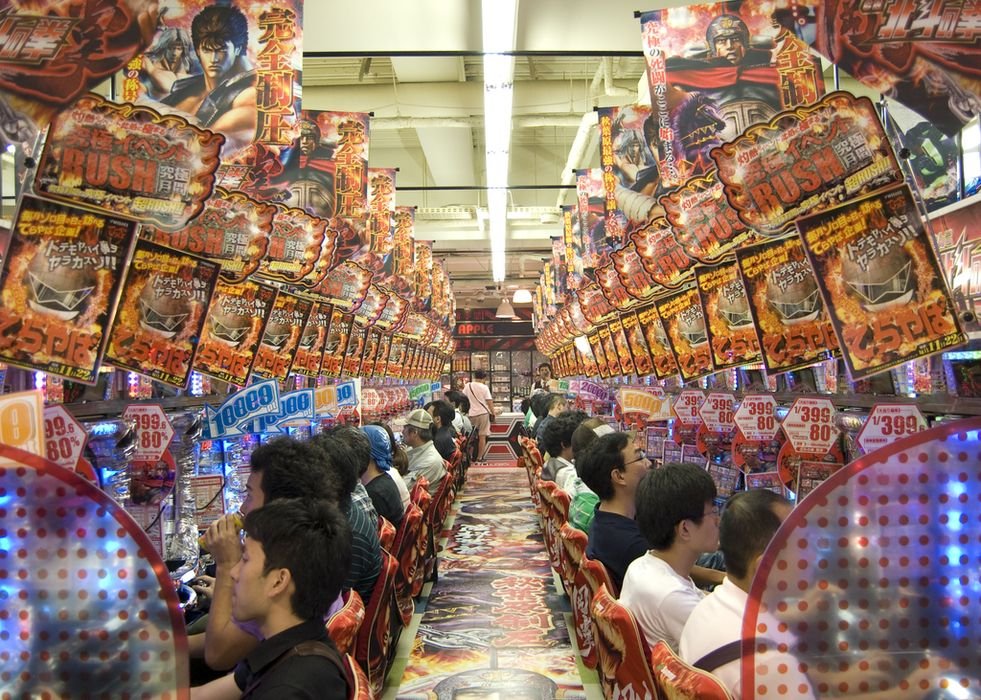
In America, we have arcades, which are the closest thing we have to Pachinko Parlors. But an arcade is nothing like a place where you can play Pachinko. These rooms are very popular because they are full of game consoles and arcade games. When you walk around in one, you see a lot of teens and young adults staring at screens for hours at a time.
You forget about food and the outside world as time goes by. Pachinko Parlors are like nothing you’ve ever seen in an arcade.
35. Tsunoshima (Yamaguchi)

Yamaguchi prefecture has a beautiful island called Tsunoshima. It is in the west of the prefecture. It is connected to the Japanese mainland by the Tsunoshima Ohashi bridge, which was finished in 2000. The 1780-meter bridge lets people get to the beautiful island while enjoying the views of the ocean, which are already a popular tourist attraction.
You can eat fresh seafood at restaurants in the area or take a relaxing walk on the beach. Seeing a beautiful sunset at the Tsunoshima Lighthouse will also be one of the most memorable things you do in Japan.
36. Himeji Castle, Hyogo prefecture

Himeji might be the most well-known castle in Japan. This Castle is a huge, stark white building that has miraculously survived wars and natural disasters. It is also known as the White Heron.
37. Cat cafes in Japan
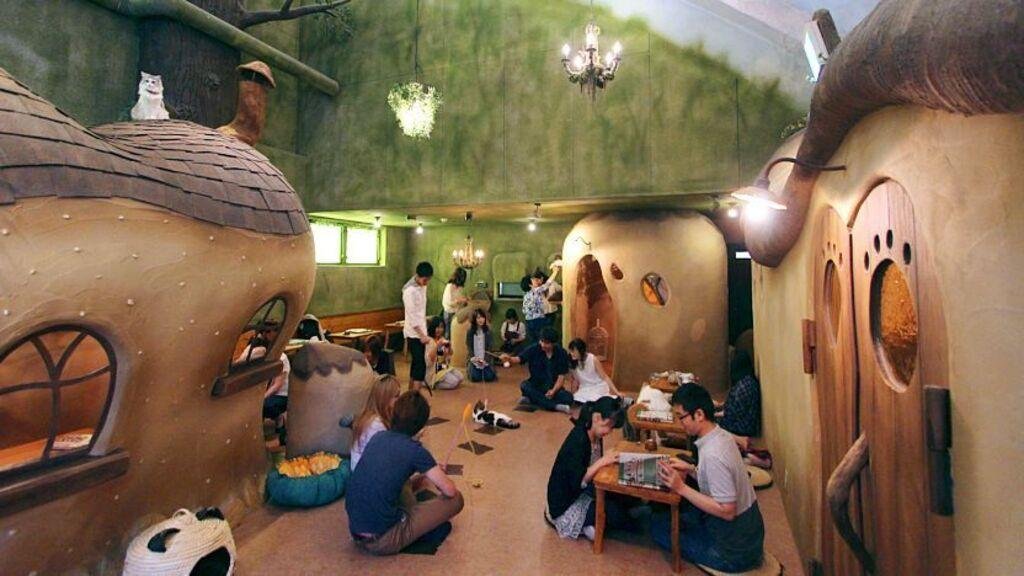
It is one of the most interesting places on Earth. Japan is proud and happy to show off its unique cat cafes. The cat cafes in Japan are a must-see in a country where cats rule over people. As you walked around Tokyo, the capital of Japan, you could find a number of cat cafes.
The idea behind cat cafes is to give people a place where they can pet animals, especially cats, and take a break from their busy lives to spend time with these wise and fun animals.
Cat cafes make you feel loved and calm at the same time. You can tell the cats your stories, pet them, or even feed them food.
The cat cafes are also incredibly unique in how they are set up and how they feel.
38. The Criminal Materials Department at the Meiji University Museum

In this part of the museum, there is a display of tools used to arrest and question suspects during the Sengoku Period, which was a time when there were a lot of wars. It is creepy and interesting at the same time.
There are also things like the Virgin of Nuremberg and the guillotine that were used to kill people or hurt people in other countries. Even though it might be scary to see them in person, it’s a rare chance to learn more about the darker parts of history that we don’t usually get to see.
Entry Fee: Permanent exhibits are free, but some special exhibits may cost money.
Address:Meiji University Museum: 101-8301, 1-1 Kanda-Surugadai, Chiyoda-ku, Tokyo, Japan Opening Hours: 10am–5pm (Closed Sundays, PH, and University Holidays)
Phone: +81-3-3296-4448 |
39. Kenrokuen Garden Park

The Kenrokuen Garden has been called one of the three “most beautiful landscaped and most unusual places in Japan.” It is full of interesting bridges, paths, teahouses, trees, flowers, and plants. Kenrokuen was once the outer garden of Kanazawa Castle. In the late 1800s, it was opened to the public. The beauty of the garden changes with each season, from the plum and cherry blossoms in the spring to the colourful maple leaves in the fall.
40. Shibuya Crossing: Busiest Place in the Japan

You probably won’t hear from many people that you should go to a traffic light. Shibuya might be the one place that doesn’t follow that rule. It will be as interesting as anything in New York, London, or Paris, and probably gets more foot traffic every day than any place in any of those cities.
The Starbucks at this intersection is the biggest in the world, and the story of Hachik the dog, whose statue is right on the street, is sure to make you cry.
41. Beaches of Ishigaki, Okinawa
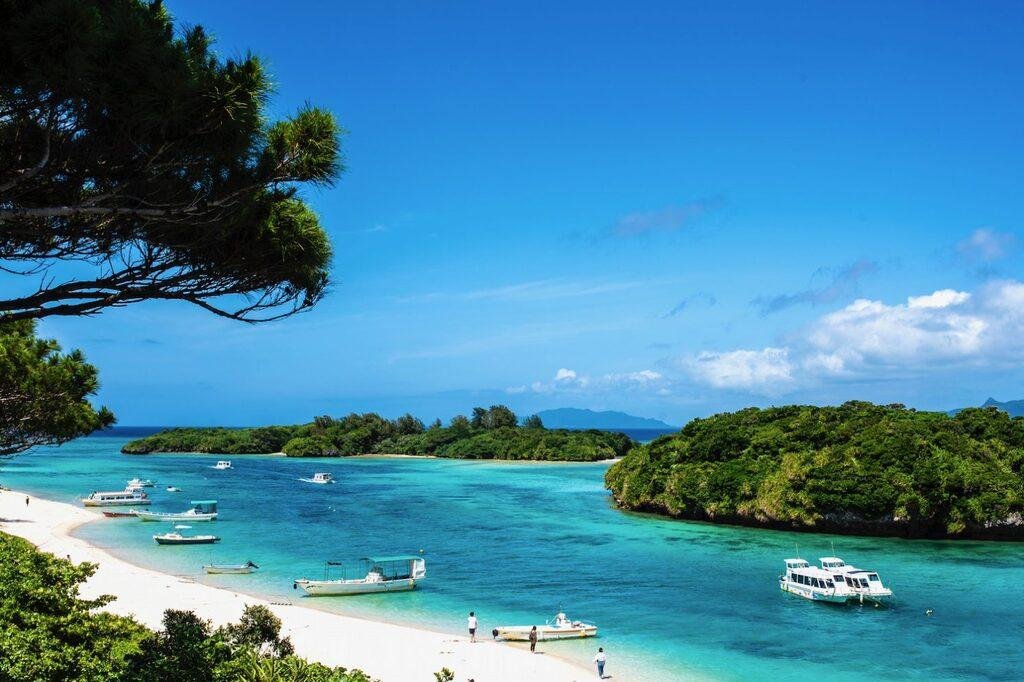
42. Koyasan Area

Koyasan, also called Mount Koya, is a holy mountain with many temples, cemeteries, beautiful views, and other things to see. Here, you can stay in a temple and eat vegetarian food, visit historical sites like this scripture depository, and even try out traditional activities and workshops.
As another UNESCO World Heritage Site, it is pretty easy for tourists to get to. There are facilities for people with disabilities, and tours are set up for people who want a guide. One of the must-see things is the famous stone gardens, especially since the biggest one in Japan is right there at Kongobuji Temple.
Entry is free, but you have to pay to stay in the temple and do some activities.
Address: Koyasan Tourist Association Central Office: 600 Kyasan, Kya-ch, Ito-gun, Wakayama-ken 648-0211, Japan | Operating Hours: 9am–5pm (Jan. and Feb.), 8.30am–5pm (March–Dec.)
Tel: +81-736-56-2616
43. Castle Of Matsumoto

One of the few original castles still standing in Japan is Matsumoto Castle. This strange place was first built in 1504, but it didn’t look like it does now until the late 1600s and early 1700s. It is known for its beautiful three-tower black and white keep, which gives it the nickname “Crow’s Castle.”
44. Akihabara: Electric Town

Akihabara is probably the most intense assault on your senses you will ever have. This area of Tokyo is where Japan’s Otaku culture can be seen in real life.
Think of all the sci-fi and anime movies ever made thrown together and filled with flashing lights. There are game shops, bookstores, sex shops, pachinko parlours, and maid cafés with more than one floor on every block. No matter what you decide to do here, you will never be bored.
45. Okinoshima Island

Okinoshima island is a traditional place in Japan, and the people there think of it as a sacred place. The “unique” thing about the island is that women are not allowed to go there at all, and men have to take their shirts off before going there.
Also, once a year, only 200 men are allowed to visit the temple on the island. Okinoshima island is a place with a lot of cultural significance in Japan. It is also a UNESCO world heritage site, which means that it has been approved and recognised by UNESCO.
45. Meguro Parasitological Museum
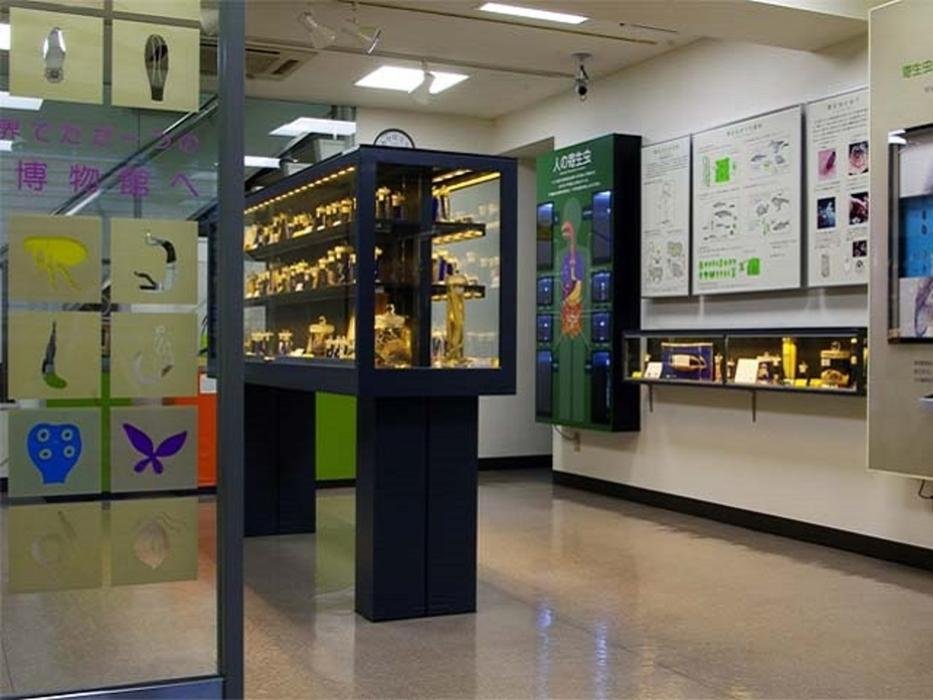
In this small, two-story museum, you can look at parasites that live on humans and animals, including one of the longest tapeworms you’ll ever see, which is 8.8 metres long.
This tapeworm is one of the more tame examples. You can also see a parasite in a turtle’s head, a parasite in a dolphin’s stomach, parasites that live in crabs, and many more. Not the best place to go after lunch, and a very strange place for scrapbooks.
The Meguro Parasitological Museum is located at 4-1-1 Shimomeguro, Meguro-ku, Tokyo 153-0064, Japan. It is open from Wednesday to Sunday from 10 a.m. to 5 p.m.
46. Nachi Falls
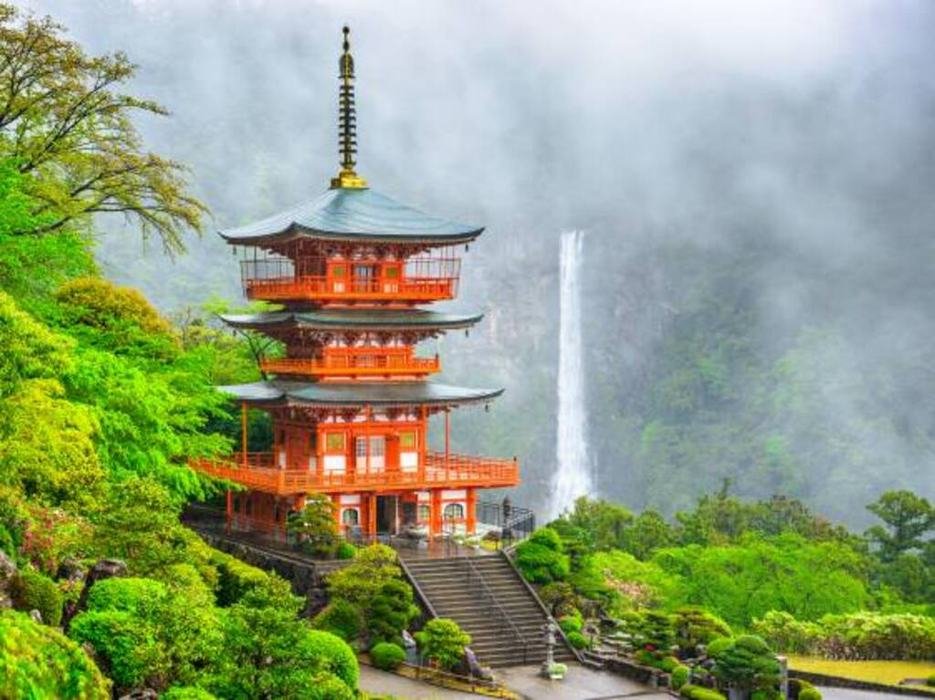
The Nachi waterfalls are the highest single-drop waterfalls in the country. They drop 133 metres (436 feet) into a fast-moving river below. The beautiful Shinto shrine Nachi Taisha, which is said to be more than 1,400 years old, towers over the waterfall. The sanctuary was built in honour of the Kami (God of spirits) of the waterfall. It is one of the most beautiful and unusual Buddhist and Shinto religious places in Japan.
47. Nara – Place Full of Deer

If you don’t have a fear of deer yet, a quick trip to Nara will change your mind. These little monsters live around the park here and their goal in life is to kill you. You can buy little packets of food to feed them, but be careful because it’s easy to lose control of the situation and end up running away from half a dozen deer that are chasing you and ready to bite your finger off.
48. Pokemon Centre, Tokyo

Do you still miss Pokemon and the sound of Pikachu? Well, if you do, this place will make you happy in your heart and soul. It’s hard to believe that this place is real, but it is.
There is a Pokemon Center in Japan for all the Pokemon fans out there. In fact, there are a number of stores in cities all over the country. You can find great Pokemon gifts, baskets, stuff toys, games, and a lot more. So, if you go to Japan again, don’t forget to stop by this fun place.
49. Atami Adult/Sex Museum (Hihoukan)

Well, the name of this one says it all, doesn’t it? The Atami Sex Museum has sculptures, paintings, and games that all have to do with its name.
You can look at a sculpture of a whale’s penis that is the size of a person’s head, then play a game with dancers whose dresses fly up when you hit the target or pay 100 (about S$1.30) to get on a funfair-style ride that looks like a giant penis.
Oh, and do you remember the kids’ carnival game “whack-a-mole”? They have their own version, but you have to hammer… You realise.
There’s a lot of cheeky fun to be had there, and if you can get over the awkwardness, it’s a great place to go with friends or even family.
Atami Adult Museum Address: 8-15 Wadahamaminamichō, Atami-shi, Shizuoka-ken 413-0023, Japan
Opening Hours: 9.30am – 5.30pm (Daily)
Tel: +81-557-83-5572 |
50. Tateyama Kurobe Route

The Alpine Route Tateyama Kurobe links the cities of Toyama and Omachi in the two different prefectures. The route can be reached by a cable car, a cable car, or a trolleybus, all of which offer amazing views of the Tateyama mountain range. The road between Bijodaira and Murodo, which is surrounded by 20-meter-high snow walls from April to May each year, is the most impressive part of the route.
51. Nakano Broadway: An Inside Look at a City

Nakano Broadway is not for people who don’t like being crowded. There are hundreds of stores in this big, multi-story shopping centre. If you’re looking for something to do with anime or manga, this might be the best place in the world to find it. The basement also has a full grocery store, which makes Nakano Broadway almost like its own city. This goes all the way into the street that leads to the indoor shopping centre.
52. Miyajima Island

If you’re looking for a place to see the beautiful sunrise or sunset, you should go to Miyajima island. This island is close to Hiroshima and has some of the most peaceful and beautiful views in all of Japan.
Also, it is the least-visited island in Japan because it is mostly covered by forests and small villages. Compared to the other islands of the country, it is quiet and peaceful.
A great place for people who want to listen to their inner voices and get away from the noise of the outside world.
People and deer walk along the shores of the sea together. It’s a great place to spend an evening alone or with loved ones.
53. The Sex Museum at the Taga Shrine

You shouldn’t stop at Atami Hihoukan when you have so many interesting places to see. Next on the list is the sex museum attached to Taga Shrine. If you want to take pictures, you have to pay an extra 20,000 (about S$253) on top of the 800 (about S$10) admission fee, so if you don’t have a lot of money, it’s best to put the camera away and enjoy everything for a change.
In Japanese culture, having sex so close to a religious place is not strange, especially since people come to this shrine to pray for children. There are a lot of stone statues on the grounds, and a lot of them are in the shape of phalluses. This gives a new meaning to the phrase “rock-hard” boners.
The museum costs 800 (about S$10), but the shrine is free to visit.
Taga Shrine’s Sex Museum is located at 1340 Fujie, Uwajima-shi, Ehime-ken 798-0010, Japan. It is open from 8 am to 5 pm every day.
54. The Blue Pond (The Blue Pond)

The blue colour of the Blue Pond in Hokkaido Prefecture, which is also called Aoiike, is well-known. Tree stumps that stick out of the water’s surface make it look even more strange.
As part of a system to stop erosion, this man-made pond was built to protect the area from mud flows that can come from the nearby mountain. The Tokachi volcano is probably one of the most beautiful places in Japan. The blue colour of the pond is caused by minerals in the water that have been dissolved.
55. Okinoshima – It’s A Man’s Island

This small island off the coast of Japan is very important to the Shinto religion, but most people know it for the fact that there are no women there. In fact, there are no women on the island at all. No woman has ever been seen on the island, and there is no record of her being there. There haven’t been many people from outside the island, so I wouldn’t count on being able to go there.
56. Temple of Jison-in

We now have a temple that is well-known for putting the focus on breasts instead of male parts. Even though the temple grounds aren’t very big, they make up for it with interesting things to do, so you’re not likely to be bored there.
You’ll see a lot of ema, which are wooden plaques with breasts on them that can be used to write prayers and are hung up as offerings. There’s a good reason for this. Traditionally, women come here to pray for things that only affect women, like having a healthy pregnancy.
But that’s not why you’re here, right? Have fun looking around, and if your friends who couldn’t come with you are jealous, you can buy them an ema as a memento of your beatiful trip.
Price: free of charge
Jison-in Temple is located at 648-0151 Wakayama Prefecture, Ito-gun, Kutsuyama-cho Kodoin 832, Japan. It is open from 8 am to 5 pm every day.
57. The Hitachi Seaside Park

Hitachi Seaside Park is known for its fields of blue Nemophila flowers that bloom all over the park in the spring. The park is 190 hectares (470 acres) in size, and every April, more than 4.5 million flowers cover its fields. In the fall, the round shrubs in the park, which are called Kochia (or Bassia in English), turn a bright crimson colour, making a view that is almost as interesting.
58. The Peace Park in Hiroshima
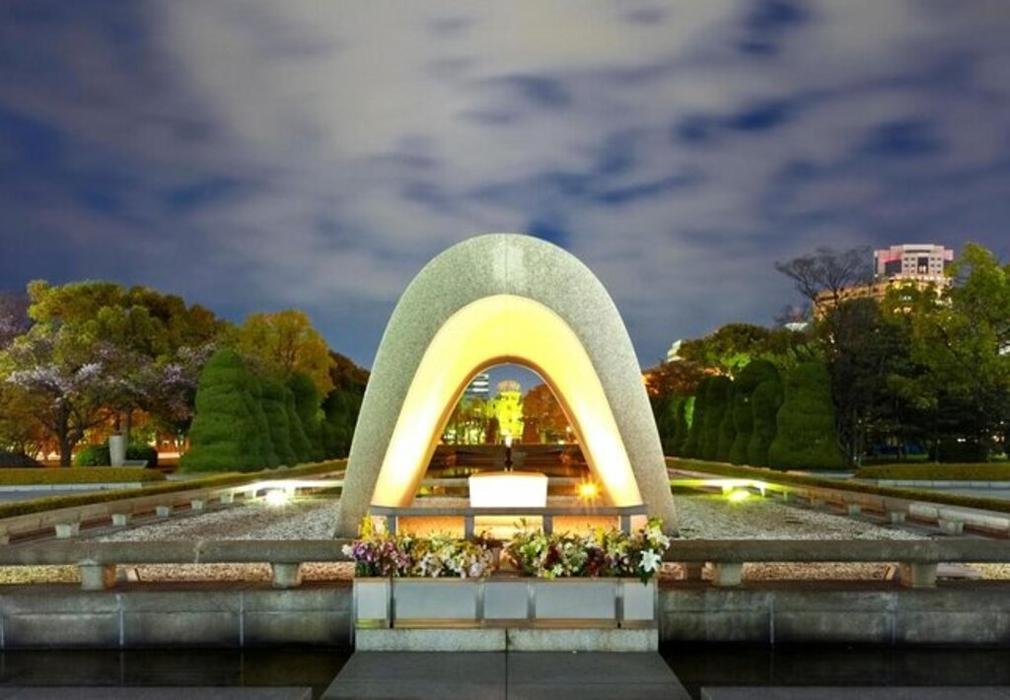
Yes, first of all. The city of Hiroshima is still there. It is also still a big city in Japan with more than a million people. Hiroshima has kept going with a lot of grace, even though the bombing in WWII will always be the most famous thing about the city. Most of the city looks pretty normal and unaffected by what happened in the past, but the Peace Park fully accepts what happened and tries to show not only how tragic the event was, but also how we can learn and grow from it.
59. Gokayama Park: Most Beautiful Place in Japan

Gokayama and the nearby village of Shirakawa-g are both part of a UNESCO World Heritage site. Traditional gassho-zukuri farmhouses are known for being in both of these odd places in Japan. The roofs of these nonreligious houses are made of thatch and are made to withstand heavy snowfall. Gokayama is harder to get to than the popular Shirakawa-go, so the villages there are quieter and less crowded.
60. Zao Snow Monsters, Yamagata

61. Tottori’s Sand Dunes

The sand dunes of Tottori are the most unusual place in all of Japan. They are in the Tottori prefecture and are part of the Sanin Kaigan National Park. The dunes are the largest in the country. They are 16 km long and run along the Sea of Japan. The shape of the dunes changes all the time because of the tides and the wind, but they can be up to two kilometres wide and 50 metres tall. There are a lot of camels in the area, which gives it a beautiful desert feel.
62. Tsukiji/Toyosu – Fish Market

Tsukiji Fish Market was one of the most well-known places in the food world until it recently closed. The market moved earlier this year to a new place called Toyosu, but it is still as big and important to the world’s fish market as it was before.
Bloomberg says that more than $5.4 billion worth of goods go through the market every year, and about $14 million worth of goods are sold every day. Food tourists have been coming to this market for many years.
63. Hill of the Buddha at Makomanai Takino Cemetery, Hokkaido

64. Nijo Castle, Kyoto – A Ninja’s Nightmare

Nij Castle was finished in what is now Kyoto, Japan, 150 years before the United States declared independence from England. This castle is in the middle of Kyoto, and it has become a popular place to visit for its history.
Back in the day, it was a pretty well-known castle, mostly because of the security features it had. The nightingale floors, which are still there, are the coolest. They are made to squeak at random, so a ninja can’t sneak up on you and ruin your day.
65. Hida – Folk Village

There’s a good place to go if you want to find out what Japan was like 200 years ago. The Hida Folk Village is just outside of Takayama. It is a place where you can see historical artefacts and learn about how people used to live. Hida is meant to look like a normal farming village, and a small lake in the middle of the quiet replica village is surrounded by activities and folk art.
67. Monet’s Water Lilies in the Pond
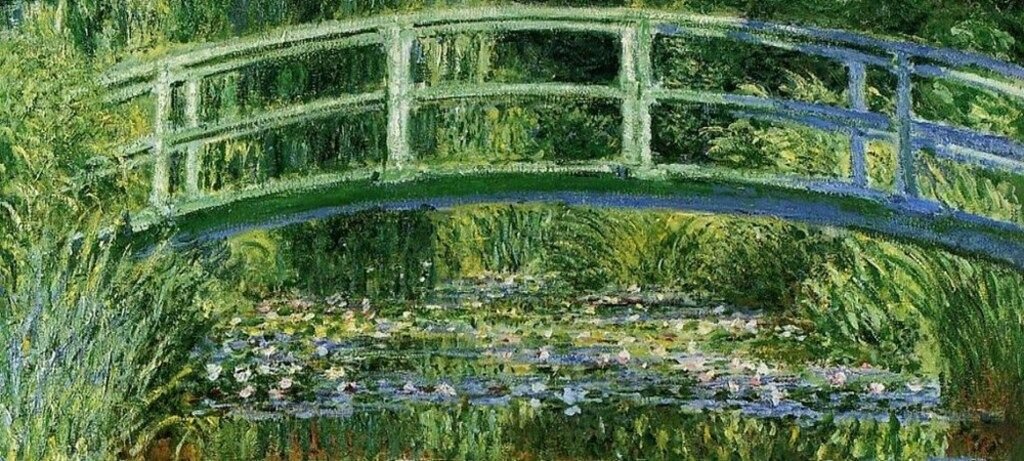
A pond that looks a lot like Monet’s paintings, especially the over 200 paintings that make up the cycle of water lilies. The beautiful pond is near the town of Seki in Japan.
68. Takayama Matsuri festival

The Takayama Matsuri festival, which takes place twice a year, has been a big part of the city’s history for hundreds of years. The town made these floats for the ceremonies over the years, and many of them have luckily made it to the present day. Now, they are in a museum that is all about the festivals. The Japanese like to show off in their own ways, and these floats are a good example of that.
69. Momijigari in Japan: The Magical place
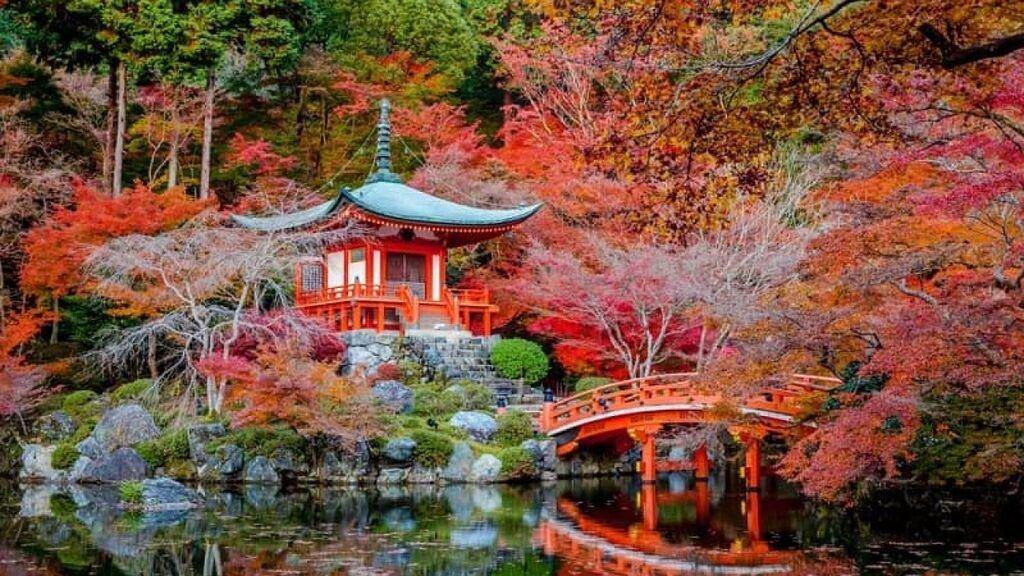
Autumn is a great time to visit the most beautiful places in Japan. It is called Momijigari because of a centuries-old tradition. At this time of year, the forest is filled with many different colours.
70. Takayama – Historic Village

The city of Takayama is in the middle of Japan. It is tucked away between mountains and forests. The city was cut off from the rest of the world for a long time, and you still can’t get there without taking a bullet train through rivers and forests. A lot of it has a lot of history, and it would be a great place to go if you like to learn about nature.
The city is at the bottom of a pretty big mountain with a park on top. I climbed down the wrong mountain and ended up in the wrong town, so I had to walk three hours to get back to my hostel.
71. The Temple with the Breasts of a Woman
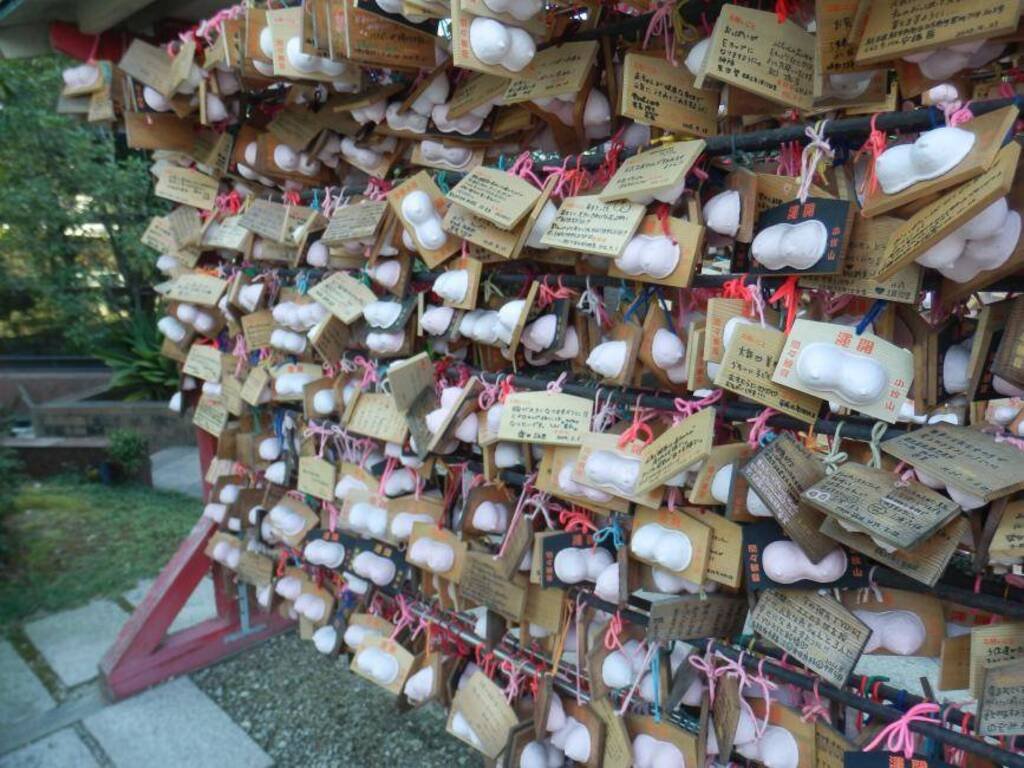
The Jison-in is a very strange building in Japan. It is in the small town of Kudoyama. From the outside, it looks like any other Buddhist temple, but the inside is full of machines that make fake breasts.
72. Tree of Life: Most Beautiful Tree in Japan

The Tree of Life in Japan is 144 years old, which is a clear sign of longevity. You can find It all over Ashikaga Flower Park. James Cameron, who made the movie Avatar, got his idea for the movie from this tree in Japan.
73. Gifu: Beautiful City in Japan

Many people have heard of Shirakawa-go and Takayma, two most beautiful places in Japan that we have also written about in some of our travel blog posts. Both of these places are in the Gifu Prefecture. When you go to see them, you can stay a few more days to learn about all the other things in this part of Japan that tourists rarely see.
Take a thermal bath in Gero Onsen, where the water makes your skin feel like silk. Walk in the village of Magome along the old Nakasendo road. Watch cormorants fishing on the Nagara river in the city of Gifu. Hoba miso is a dish that is common in Gifu. It is made by cooking different ingredients on magnolia leaves with a sweet miso. It is a very tasty dish that even Japanese people who live in other places don’t know about.
74. Takeshita Boulevard: Place to Shop
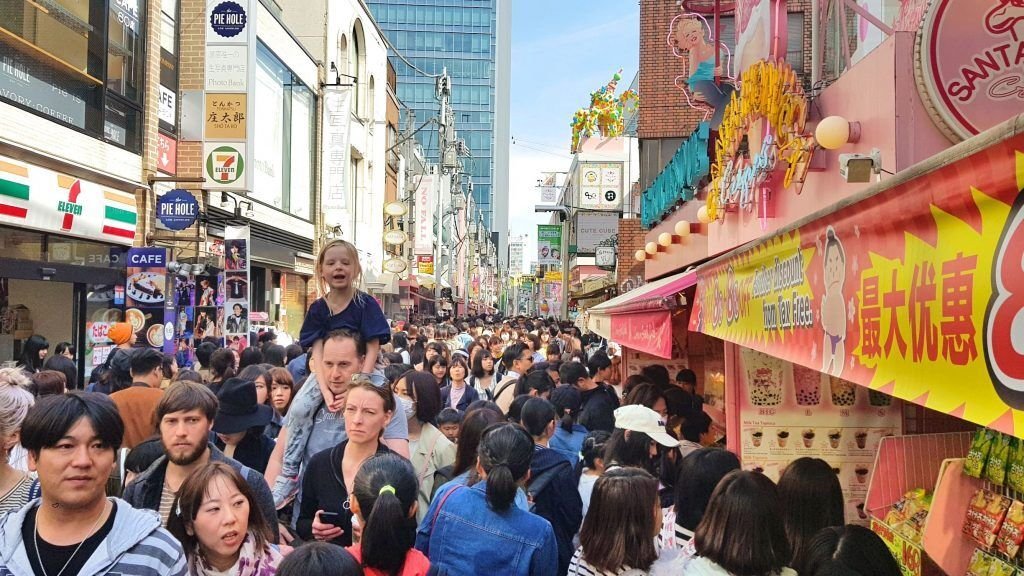
Takeshita Boulevard is the place to go to find out what will be “in” a year from now. This part of Tokyo has a lot of small, independent shops that young people like. There are all kinds of shops and restaurants, and many of them sell unique, one-of-a-kind gifts. There are also some fashion boutiques that are on the cutting edge.
This busy street is definitely worth seeing, and you can easily spend a good amount of time there.
75. Beppu: Island of Kyushu, Japan: Most Beautiful Place in Japan

Beppu is one of the most beautiful places in Japan. The hells of Beppu are in the middle of the city, and you can see the hot springs and the power of nature there. You can also stay in great ryokans. Get the feel of warm volcanic sand, and do a lot more.
Foreign tourists don’t come here very often because locals believe it is also one of the most unusual places in Japan. Many think it is a little far from Tokyo. Consider, though, that the Shinkansen train from Hiroshima to Beppu only takes 3 hours. However, we recommend that you take a comfortable and cheap domestic flight from Haneda airport, where there are never any lines and you can check in quickly.
76. Kiyomizu-Dera Temple (Kyoto)
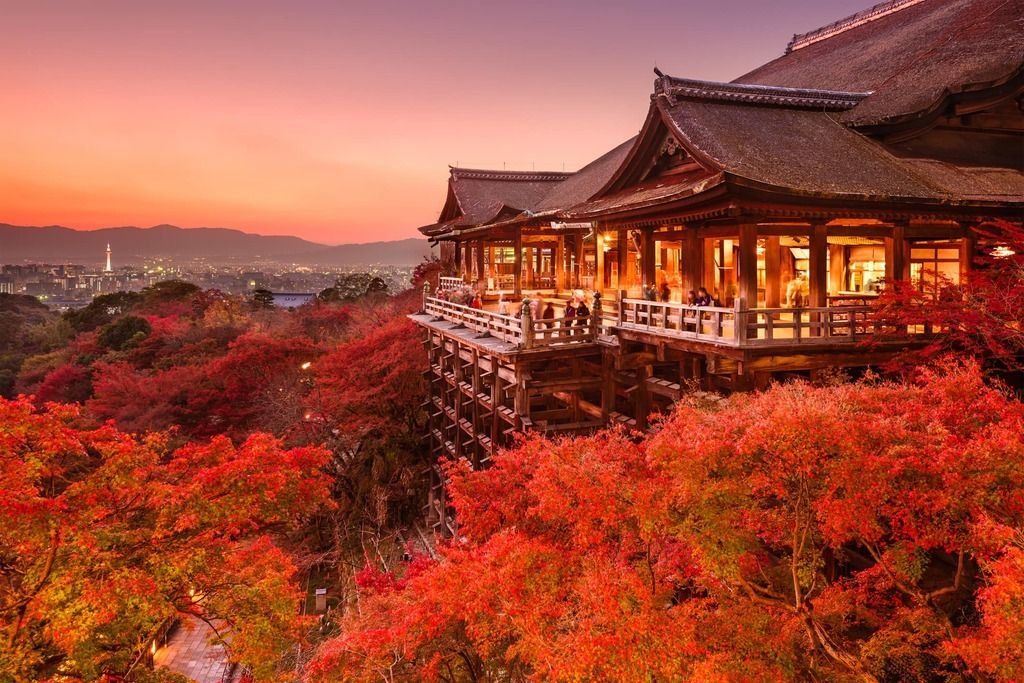
The Kiyomizu-dera is one of the most well-known Buddhist temples in the country, and its rough edge is well-known. The small walkway near the top of the temple (shown above) looks like it will fall over if too many people stand on it at once. The rest of the temple has beautiful pagodas and paths through nearby forests that lead to a series of bridges that you have to climb to get back to the ground.
77. Tohoku: Unspoiled Rural Landscapes: Most Beautiful Place in Japan

Tohoku is a large area in the north side of Tokyo. This is made up of six prefectures. You can’t see everything, and I recommend it to people who have already been to other parts of Japan and want to see something more rural. Ginzan Onsen and Nyuto Onsen are the best places in Tohoku for onsen and ryokan. Even though it is a little hard to get to, Ouchujuku is a very unique village. Near Aomori, in the park of Hirosaki Castle, is one of the best places in all of Japan to see cherry blossoms. Around the first week of May, they bloom the most.
78. Mount Yoshino: Most Beautiful Place in Japan
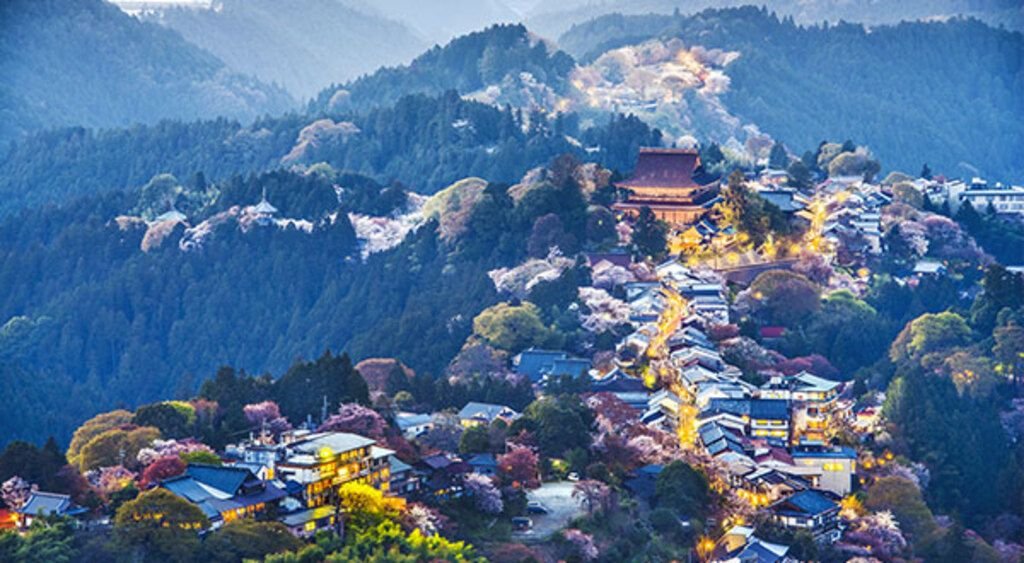
The castle was built in the 17th century, but it was fixed up in 2015, so people can go inside and look at the new architecture.
79. Shirakawa-go Village

80. Lake Kussharo, Hokkaido: Most Beautiful Place in Japan

81. Tama Art University Library, Tokyo

82. Hitsujiyama Park, Chichibu

83. Bioluminescent Rocks, Okayama: Most Beautiful Place in Japan

84. Daigo-ji Temple

Conclusion
These are 84 most beautiful places in Japan from Travel World Fashion. We hope you will like our article and if you do then please comment below.




